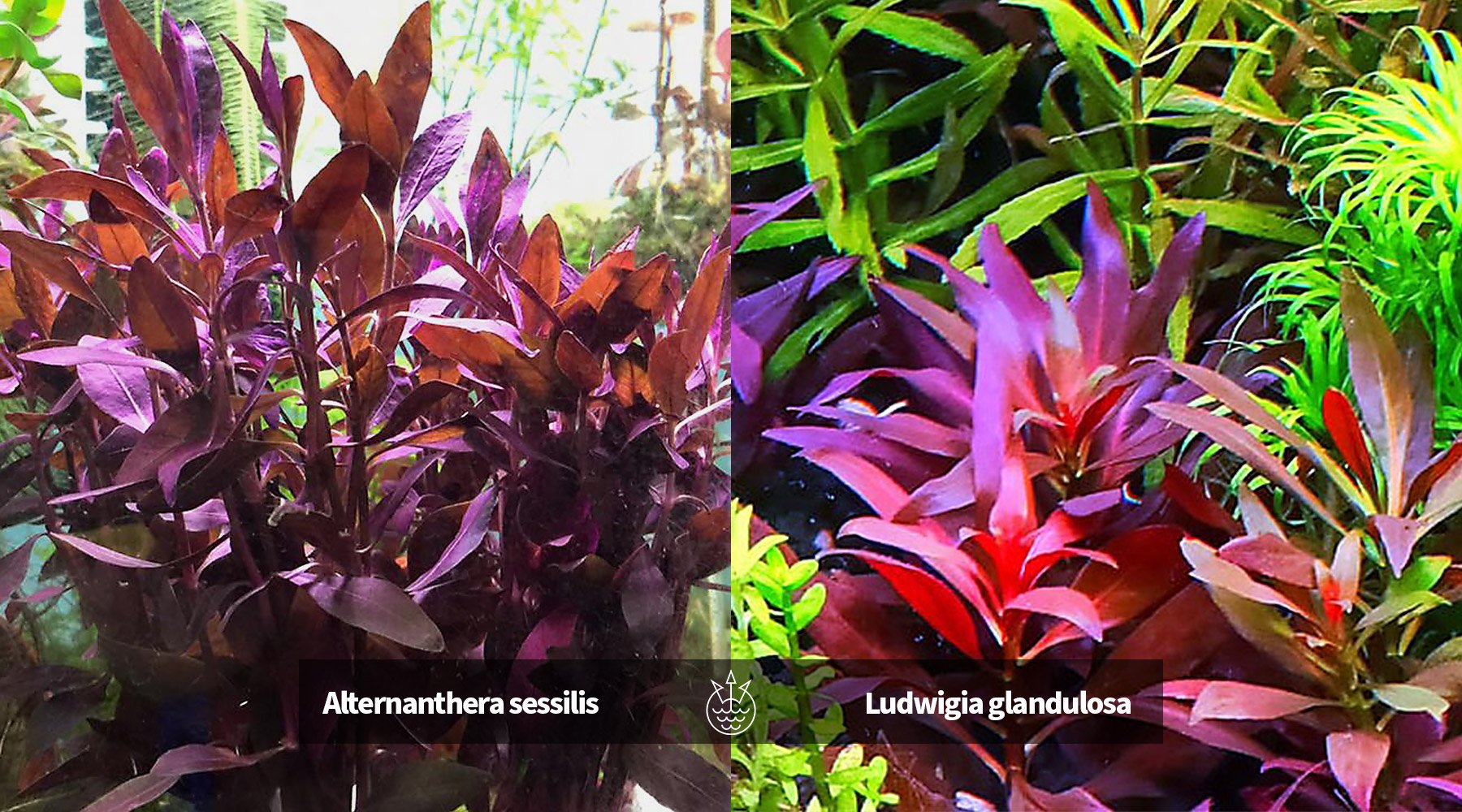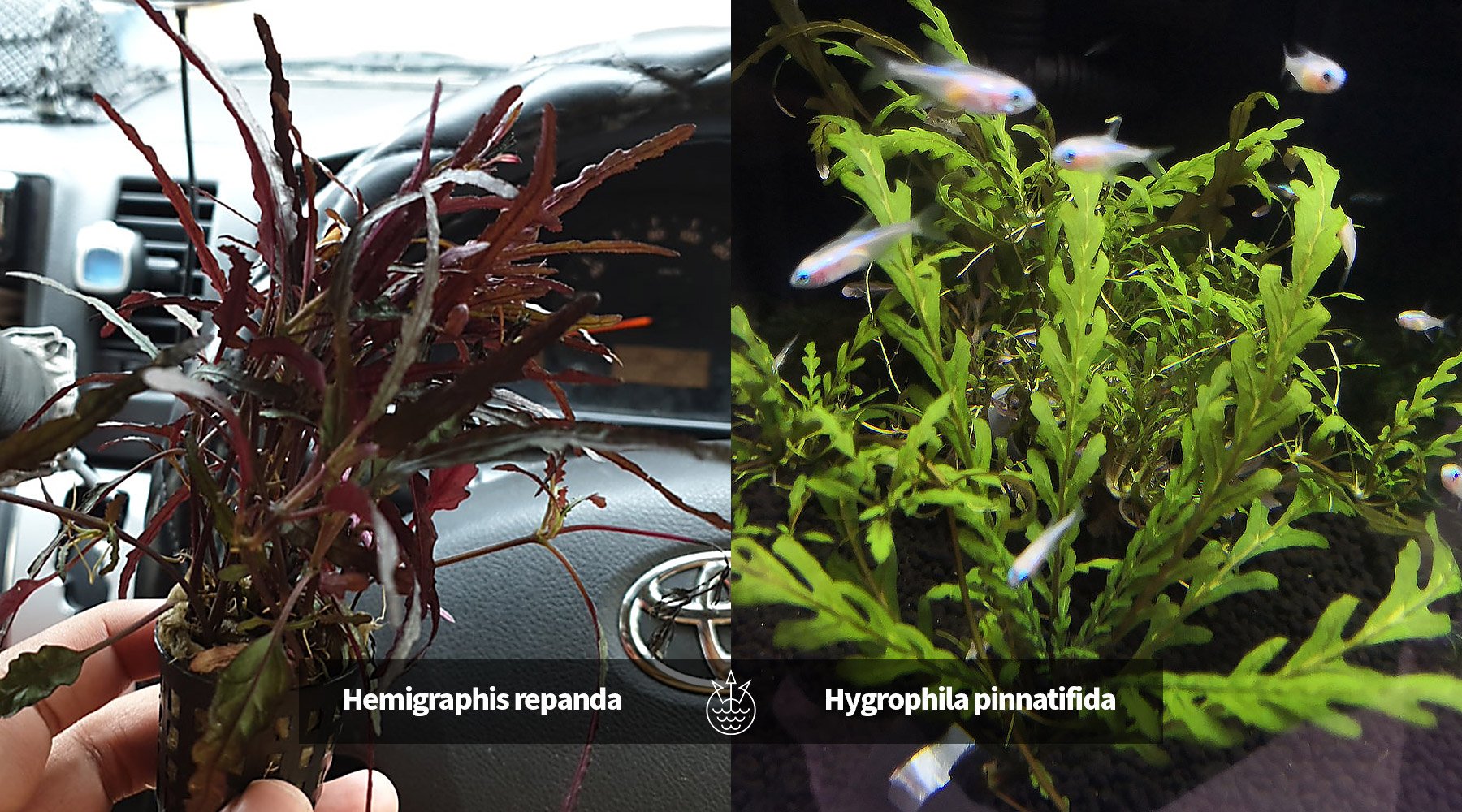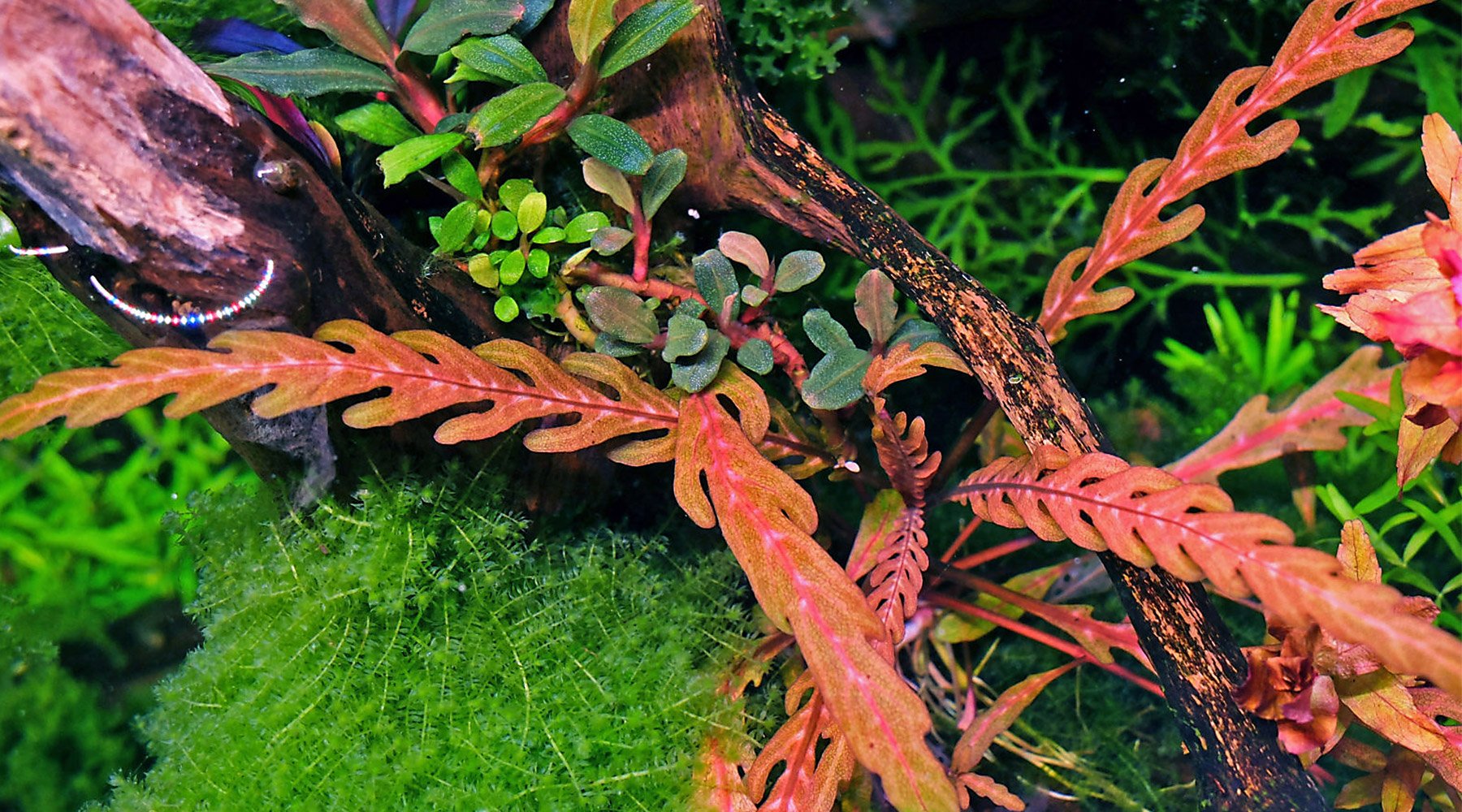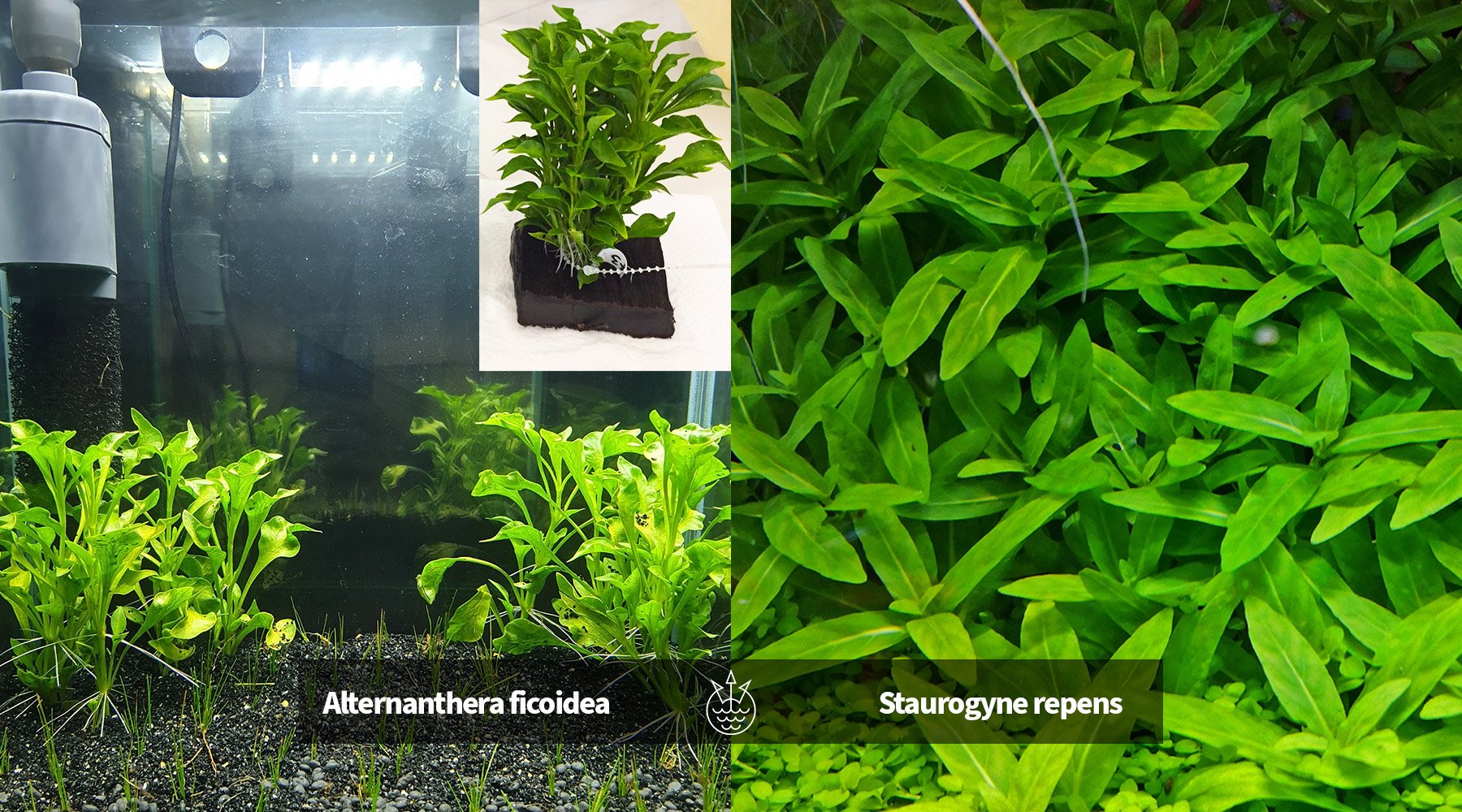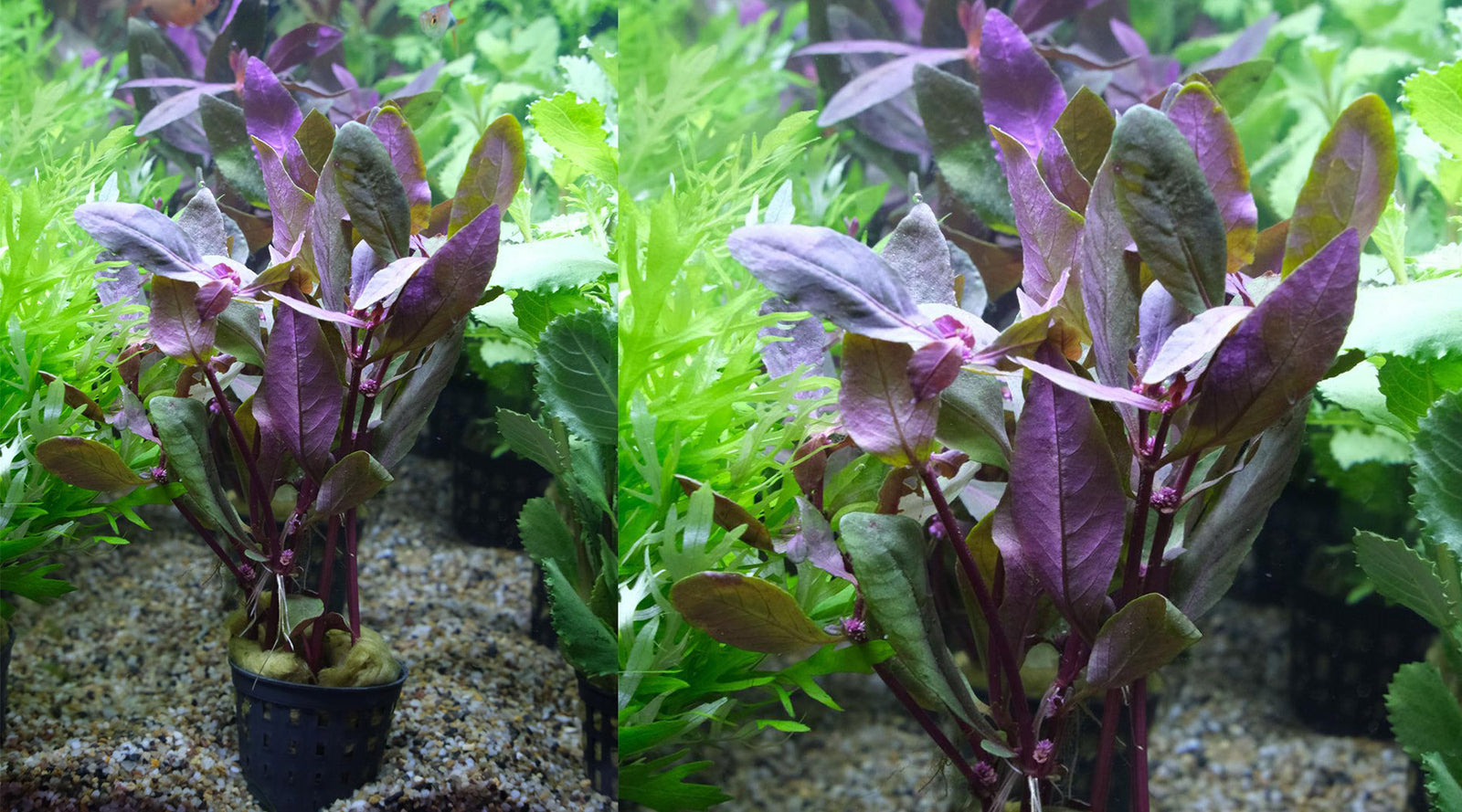
If your plant doesn’t survive in your aquarium, one reason might be that it is non aquatic in the first place. Or rather, it needs to grow emersed (i.e partially submerged) and cannot survive permanently under water.
These are often marsh plants that can be found growing near water bodies. They tolerate having their roots in water but their leaves need to grow above the water line. They are used to seasonal wet conditions but do not have the adaptations that true aquatic plants have that let them survive and grow underwater permanently.
Many of them are produced by the same farms that cultivate aquatic species. As these marsh plants are suitable for terrariums and bog gardens, farms do not necessarily discriminate between them.
However many pet shops / aquarium shops indiscriminately sell these plants together with truly aquatic plants, which is a problem. In the top picture above, the non-aquatic Alternanthera sessilis is presented as an aquatic plant.
These marsh plants can survive for weeks submerged, but will eventually deteriorate. Their gradual decline in the aquarium also attracts algae as damaged and rotting plant tissue release sugars and proteins on which algae can feed.
Today we feature 3 popular examples that are attractive to beginners but are not suited for permanently submerged growth.
Trap 1: The irresistible purple
Above: Alternanthera sessilis (on the left) is a non-aquatic Alternanthera species that is commonly sold in pet shops and looks strikingly similar to Ludwigia glandulosa (right). Its attractive purple coloration makes it irresistible for hobbyists.
It can be differentiated by its more rounded leaf tip compared to L. glandulosa. Ludwigia glandulosa has an alternate leaf arrangement, while A. sessilis has an opposite leaf arrangement.
Trap 2: Dragon’s Tongue
Above: Hemigraphis repanda (left) , also known as ‘dragon’s tongue’, is another common non-aquatic. It has attractively shaped leaves with a purple underside. It looks very similar to the aquatic plant Hygrophila pinnatifida (right). It has shallower narrow lobs and is generally much thinner than Hygrophila pinnatifida.
Above: Hygrophila pinnatifida turns an attractive orange under a nitrate-limitation approach. Read more about this technique here.
Trap 3: Hooked Shrub
Above: Alternanthera ficoidea is another non-aquatic Alternanthera species. It looks very similar to Staurogyne repens. It has distinctively hooked shaped leaves, which is the easy way to identify it.
In summary:
- When buying plants for your aquarium, beware of popular non-aquatic plants. They can last for weeks in a planted aquarium, but eventually deteriorate and trigger algae.
- 3 common non-aquatic plants are Alternanthera sessilis (with its irresistible purple leaves), Hemigraphis repanda (‘dragon’s tongue’, the pinnatifida lookalike) and the Alternanthera ficoidea (the green shrub that looks like S. repens but has hooked leaves).
